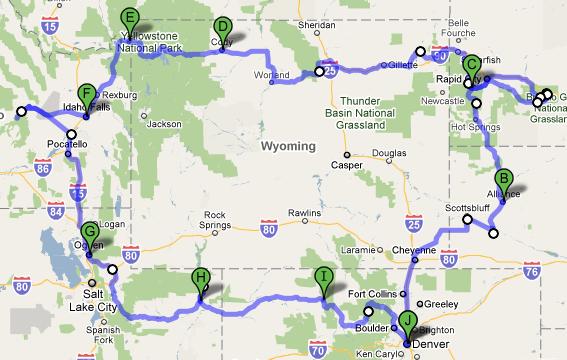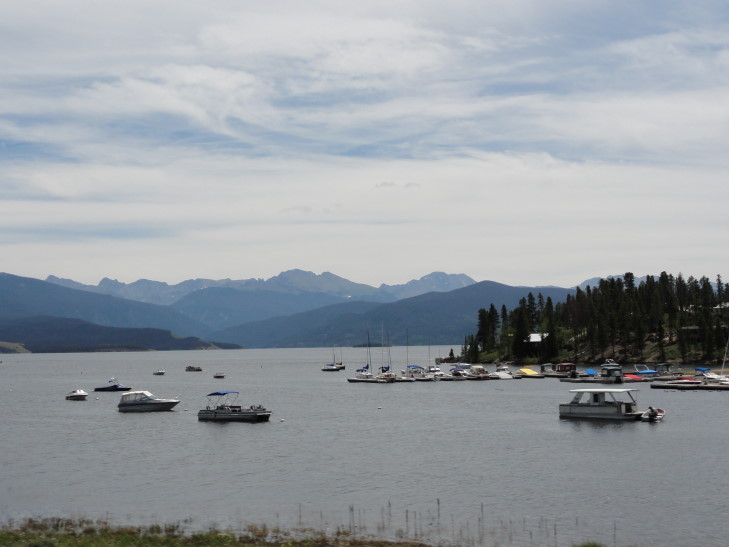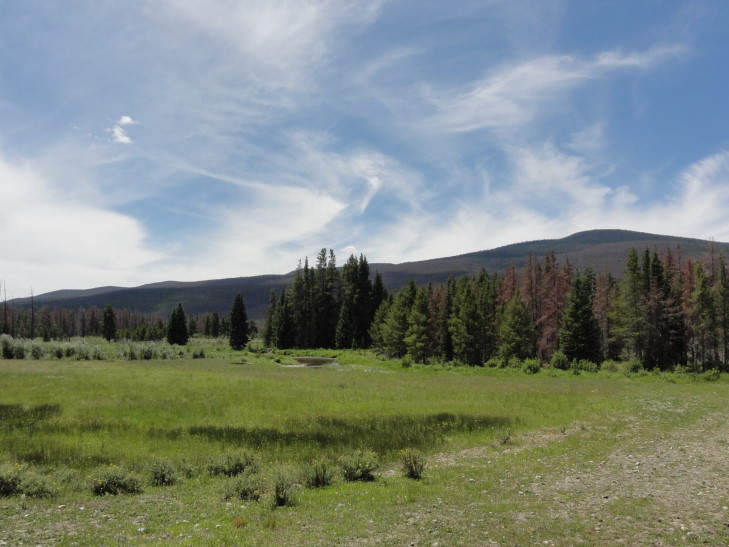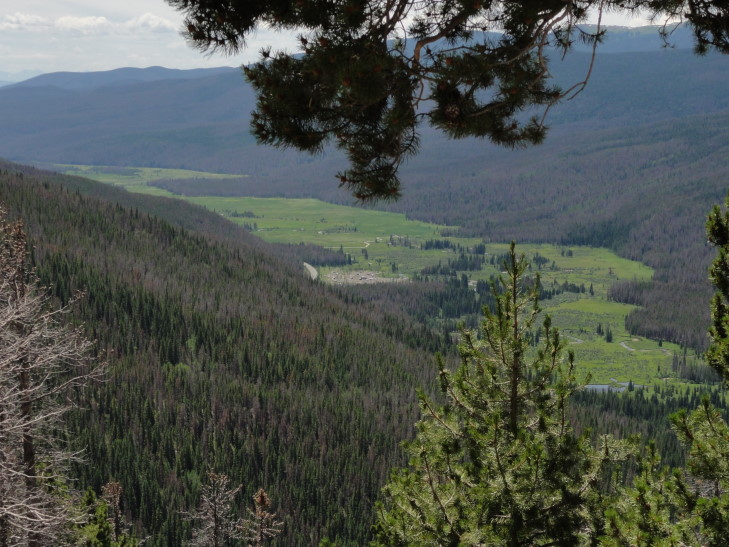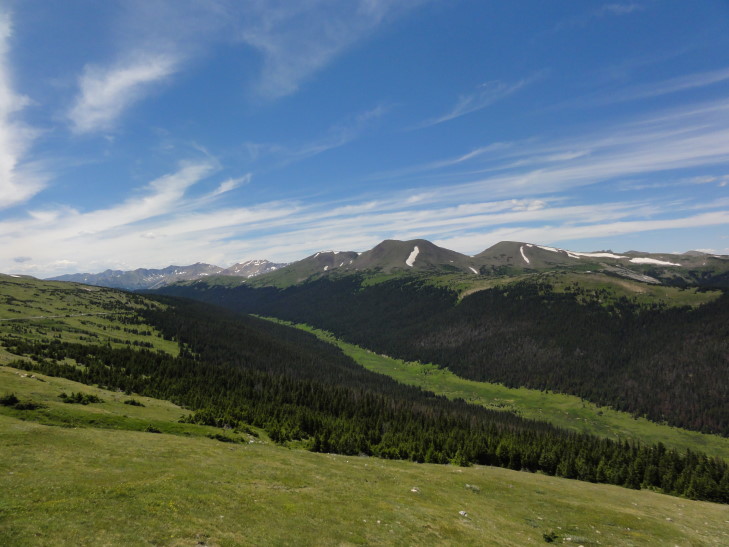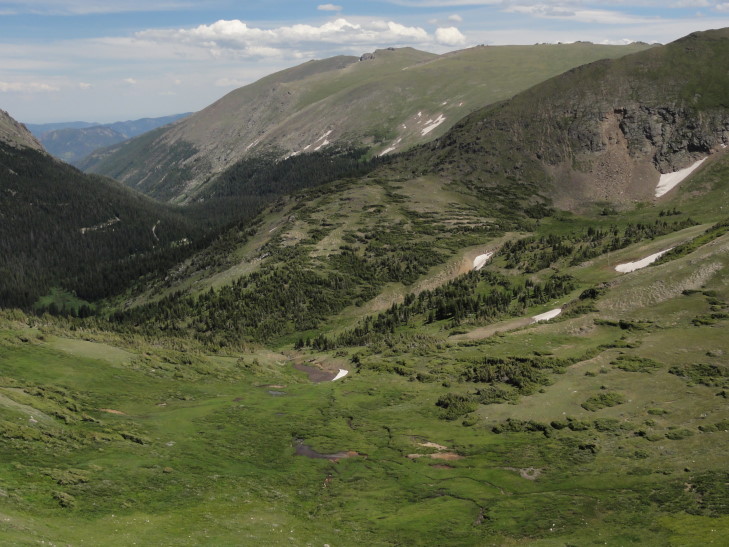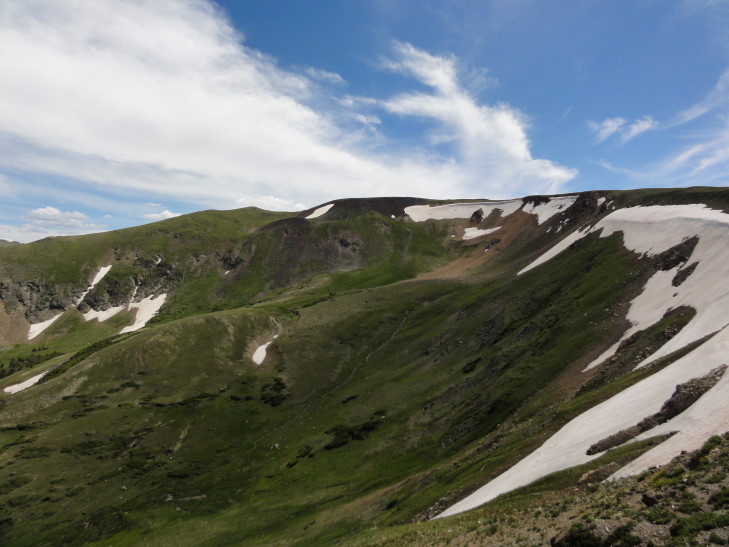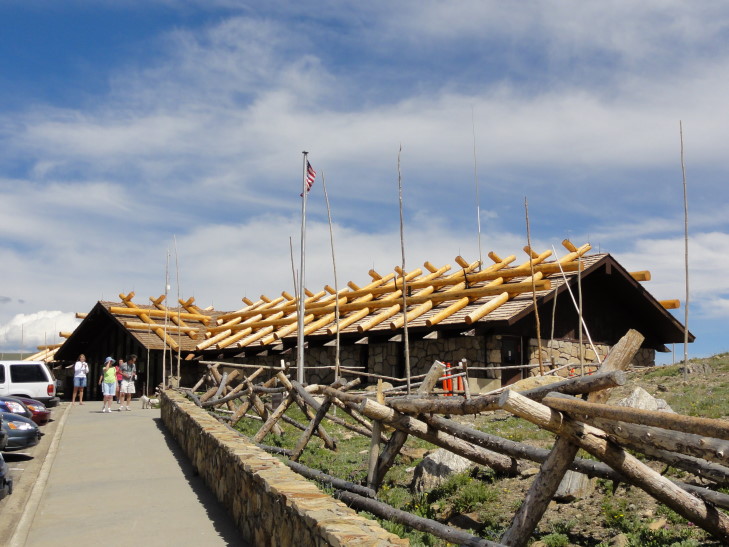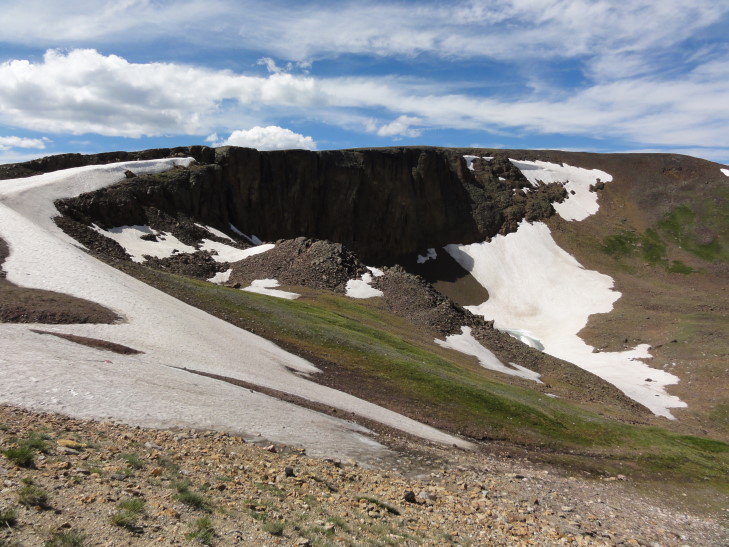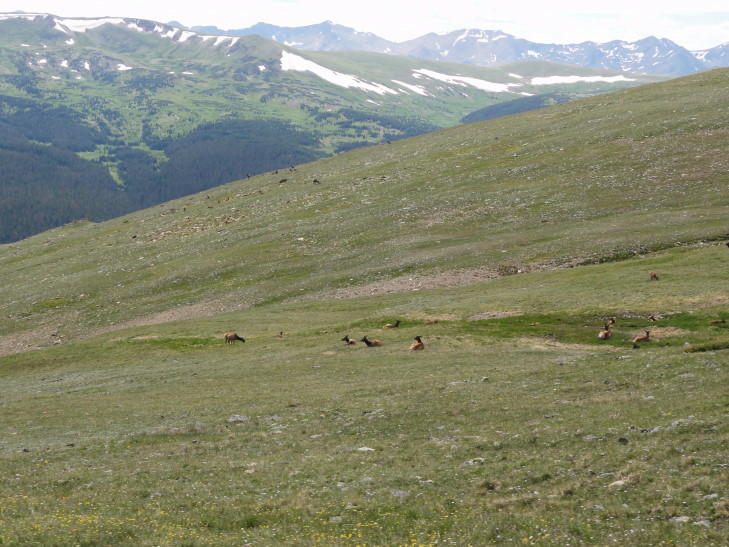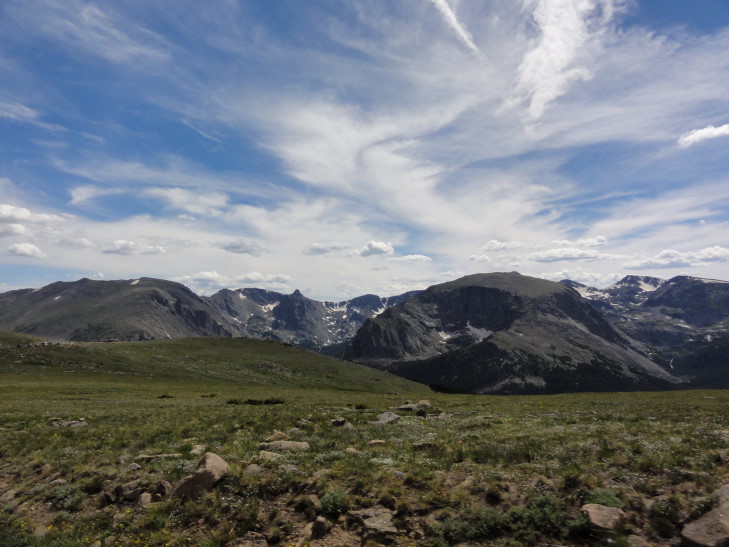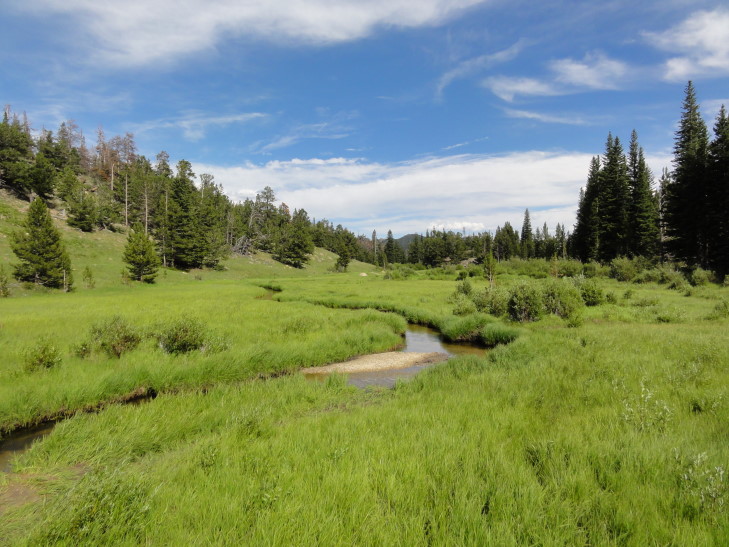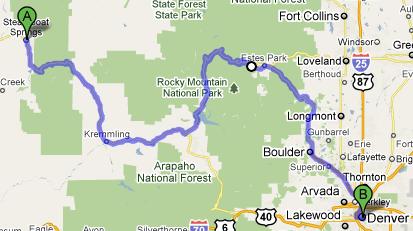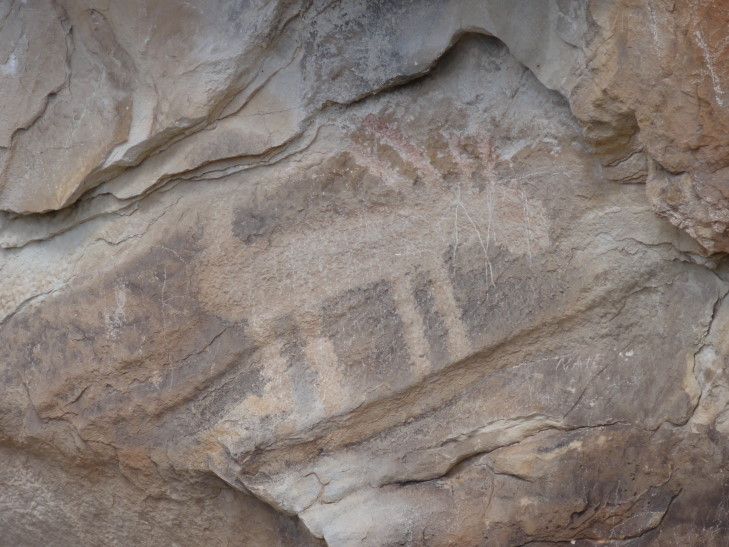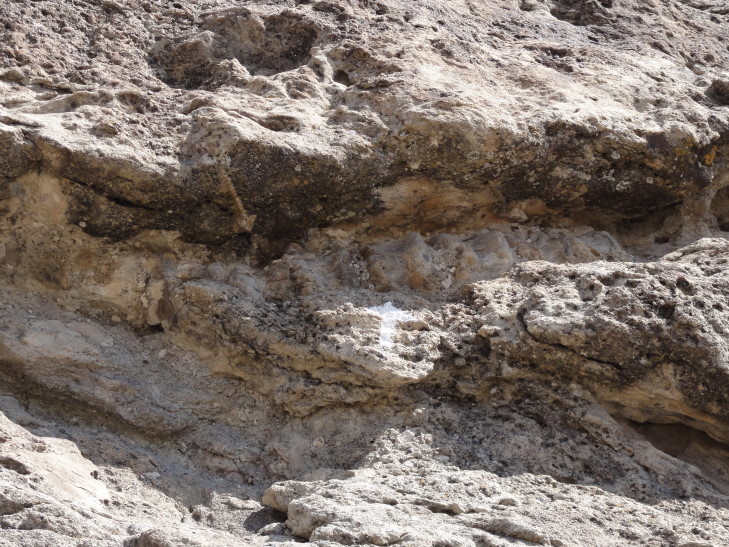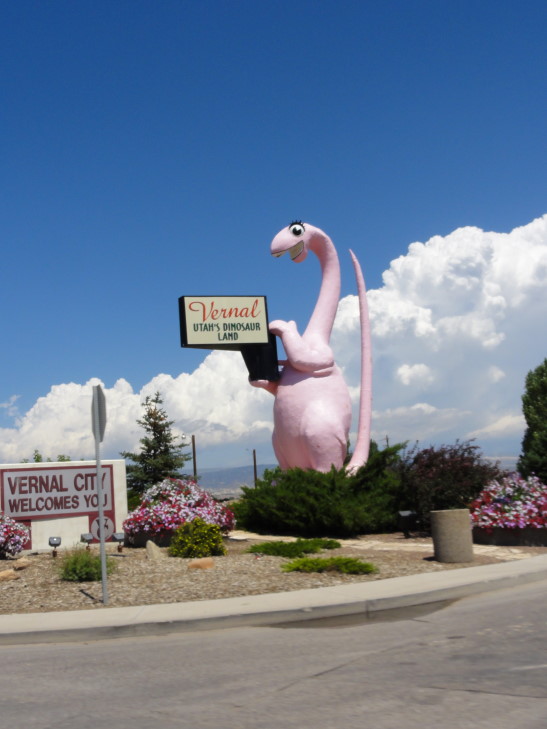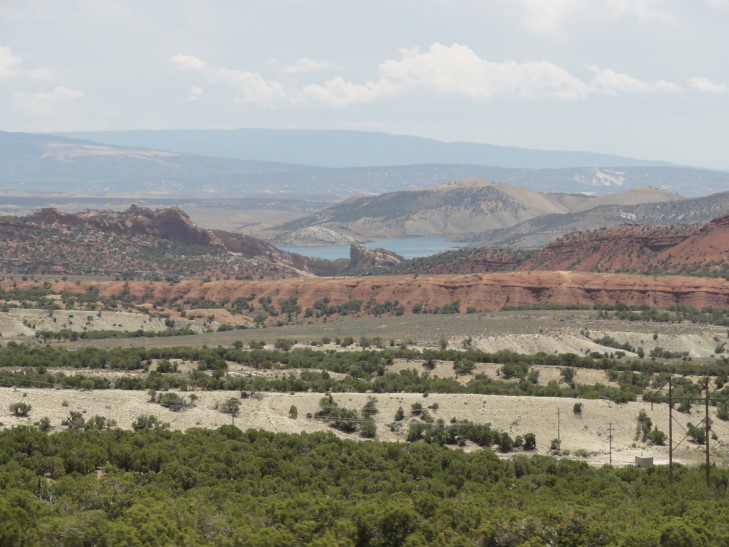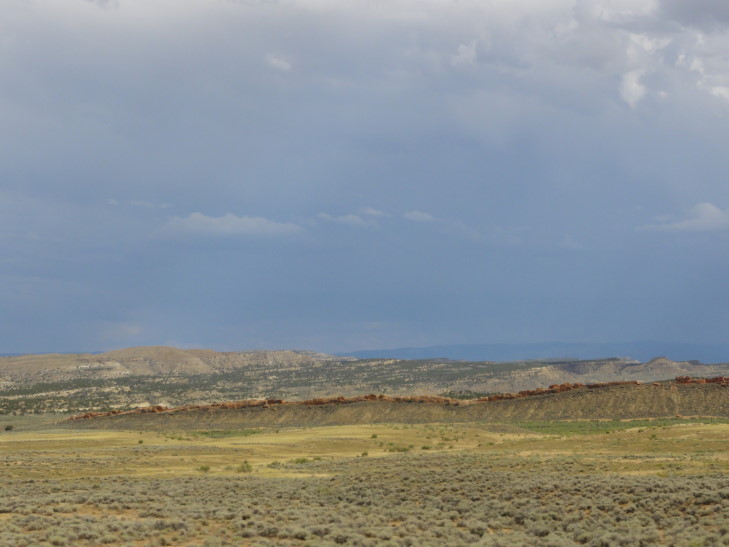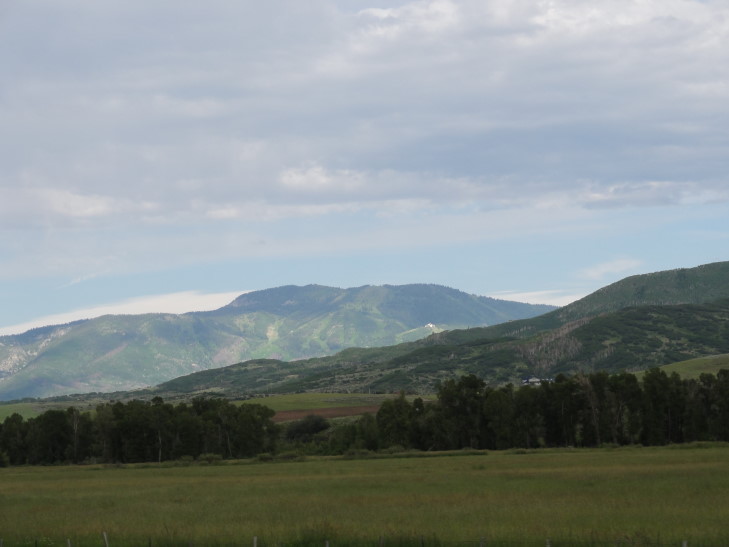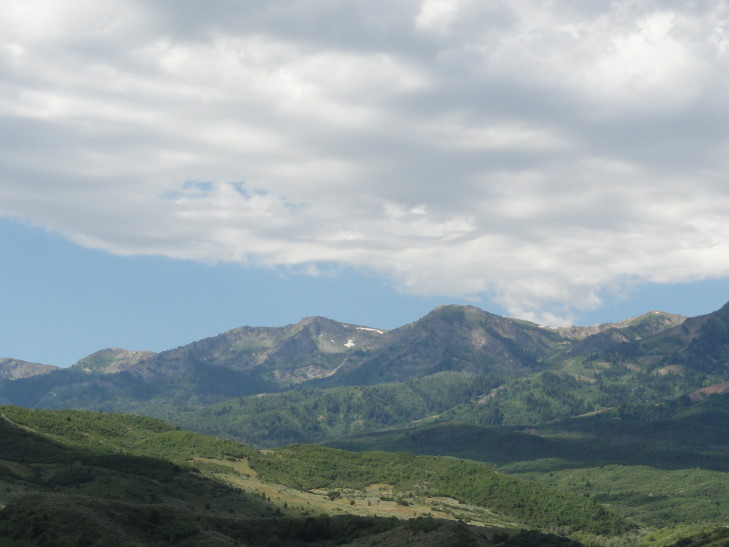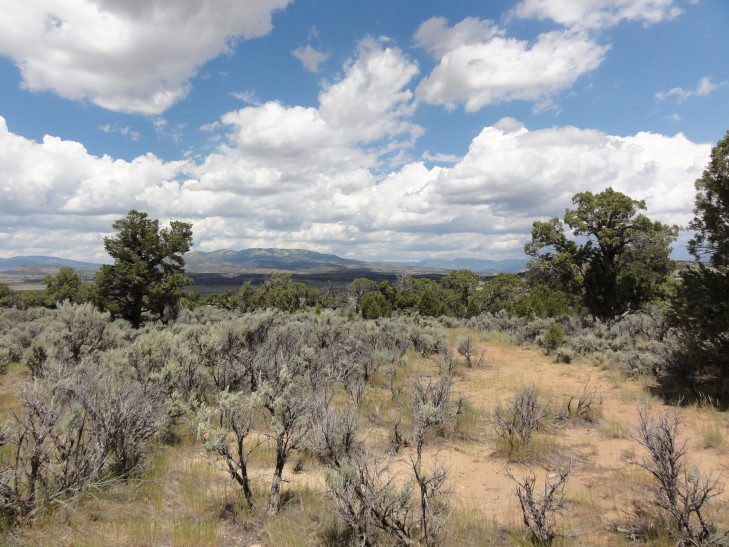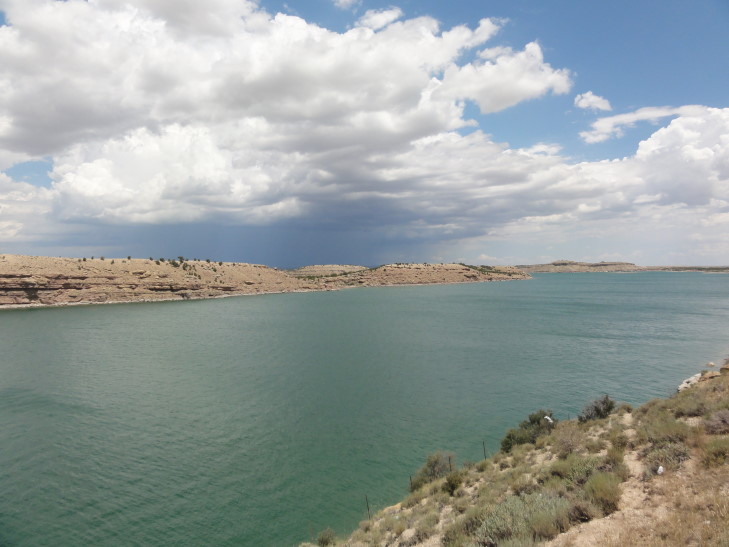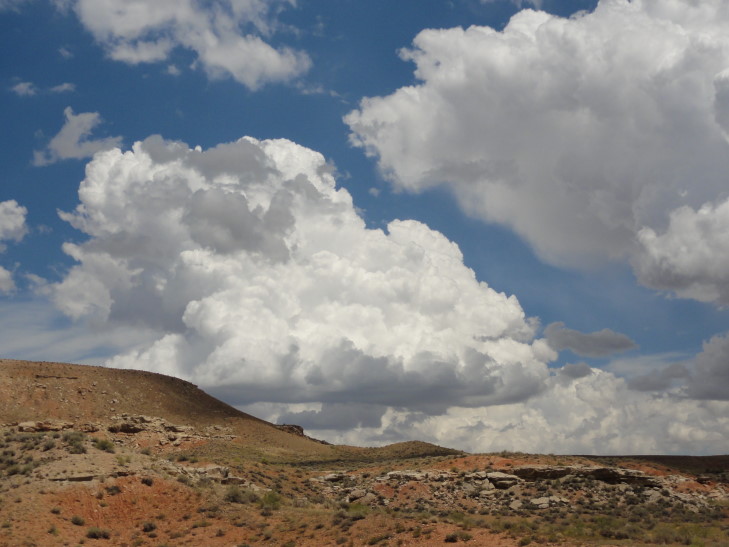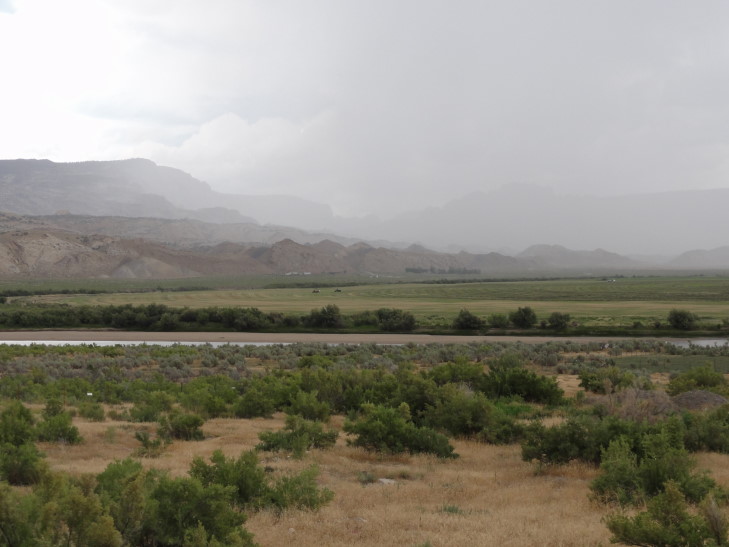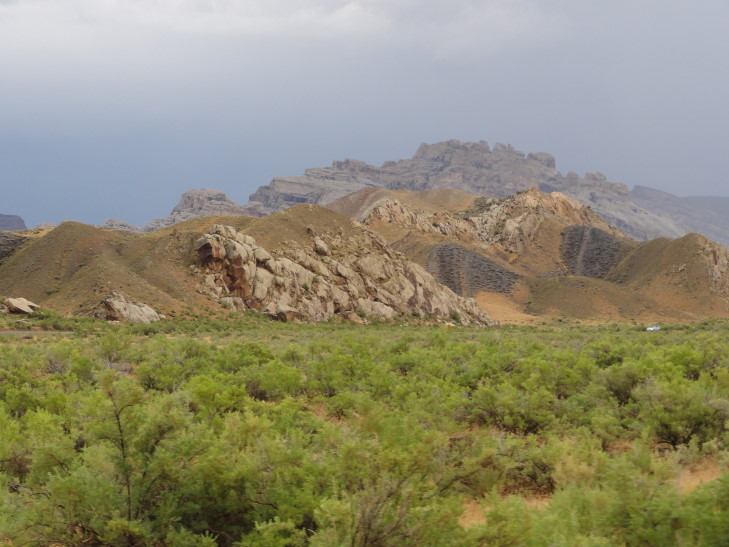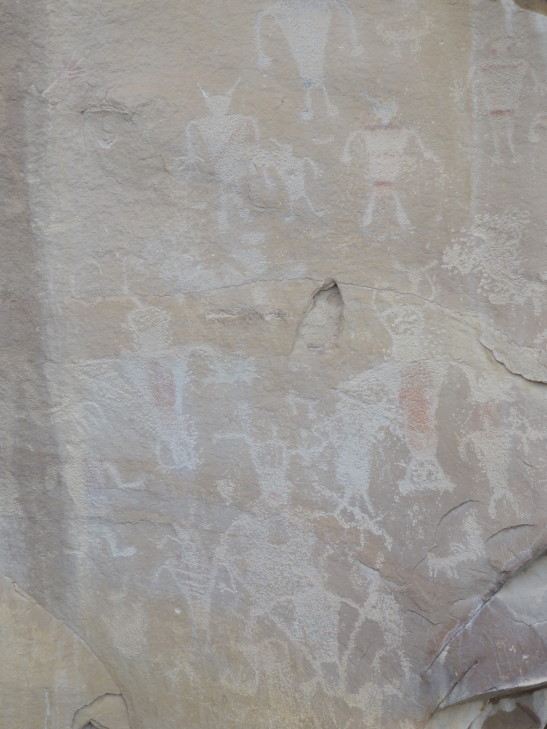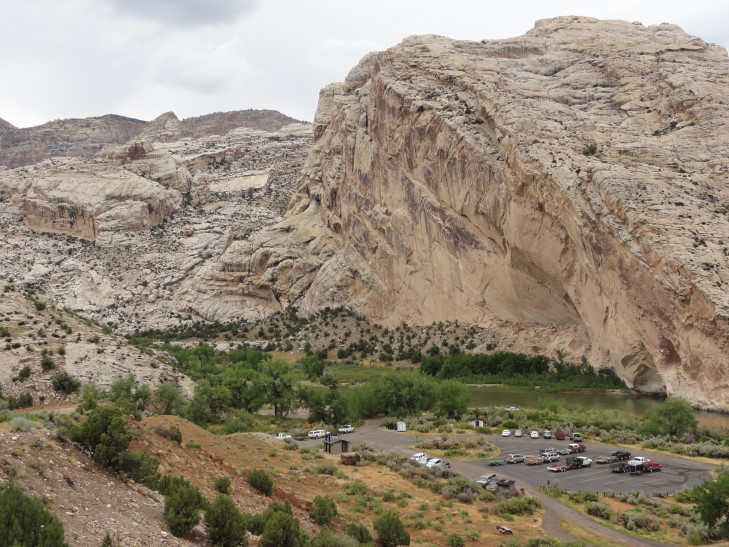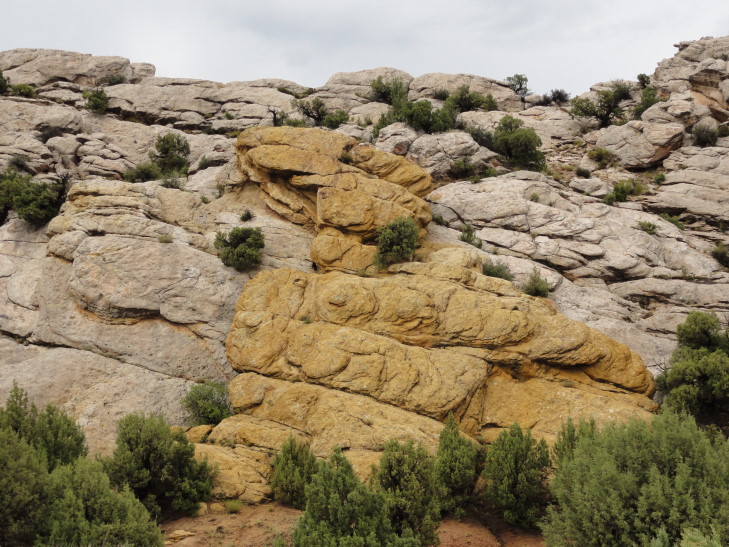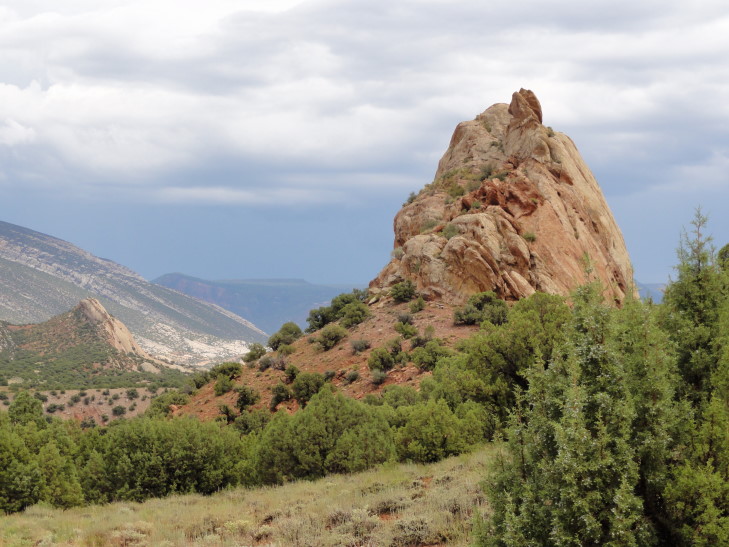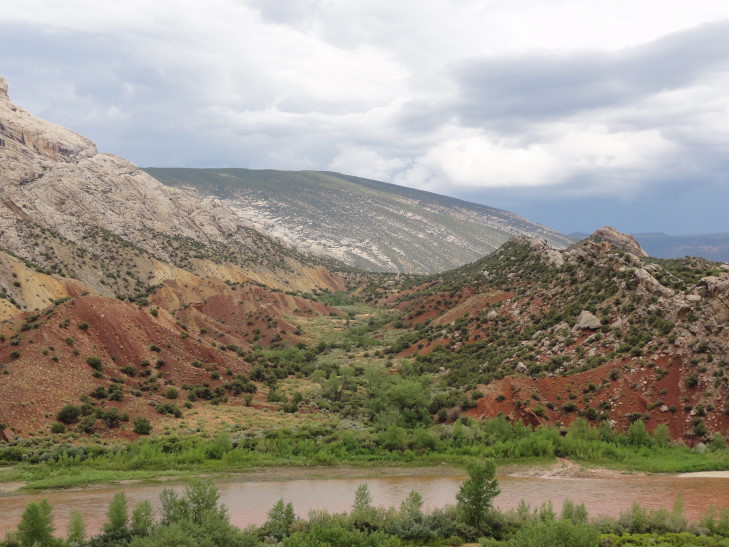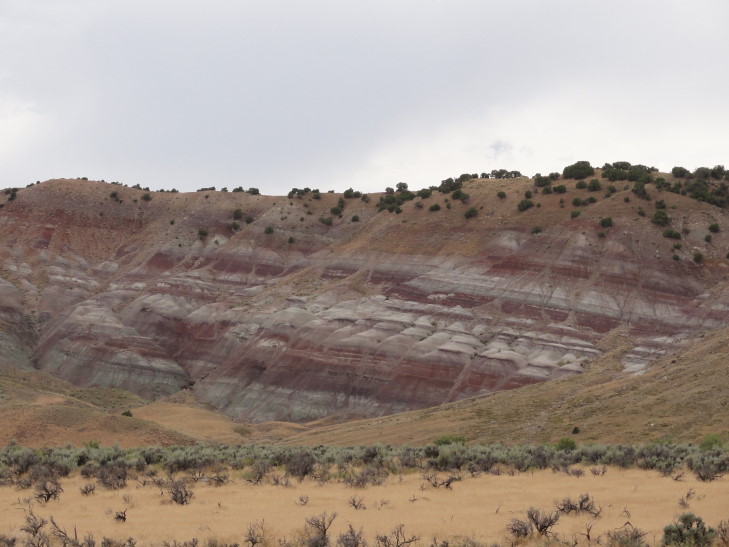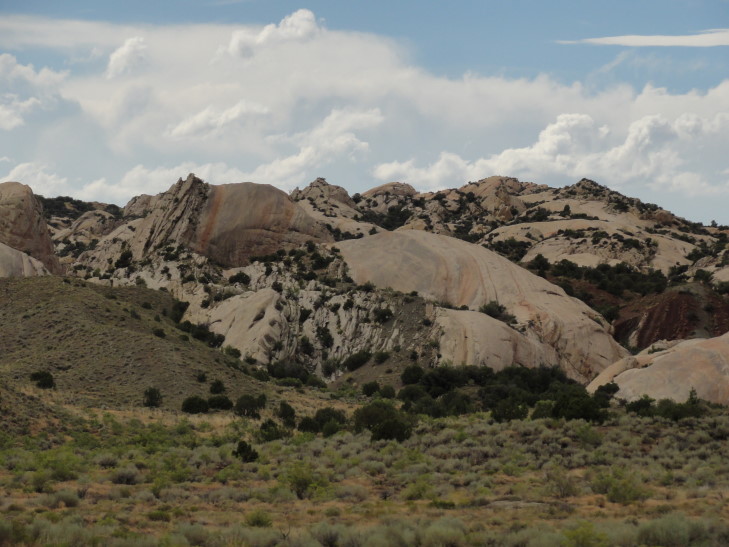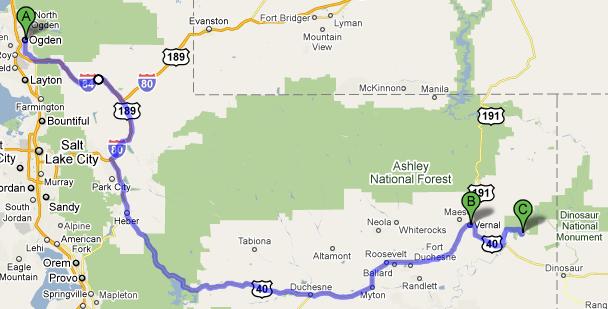Woke earlier than usual, got breakfast (yay Holiday Inn Express — finally free breakfast again!), and checked out by 9 AM. Ran to Wal-Mart to pick something up, filled up the car with some gas, and got some tea from McDonald’s for the hour and a half drive out to Craters of the Moon National Monument. We headed out on US-20 and unfortunately almost immediately encountered construction delays.
Soon after the farmland gave way to sage brush scrub land with several buttes (including Big Southern Butte, which I took great joy in calling Big Southern Butt) in the distance to the south and a range of mountains to the north. US-20 goes straight through the Idaho National Laboratory, a leading center in nuclear research. They’ve produced more reactors than any other place in the world, just over fifty. In addition it is the site of EBR-1, the first nuclear reactor to produce electricity. INL is also the birthplace of the nuclear navy with the first nuclear reactors to be used in subs and other vessels developed and tested there. Fascinating stuff.

Lava Flow with Big Southern Butte beyond, Idaho
We also learned that the Lost Rivers ran underground through most of the area, forced underground by the lava fields of Craters of the Moon and not emerging to the surface until just short of merging with the Snake River — a distance of over one hundred miles.
Passed through Butte City (which again elicited quite the chuckle from immature yours truly) and Arco. Arco became the first town powered by nuclear energy in 1955 with electricity generated in the nearby INL. Arco is also where the nice retired police chief that we met at Wal-Mart lived — amazing that he has to drive one hour plus to shop — but there truly is nothing between Arco and Idaho Falls in the way of shopping (and nothing in Arco itself, of course).
Just west of Arco on US-20 we really started to see the beginnings of the lava flow (which we later learned to be the Blue Dragon Flow) — a black line on the horizon stark against the pale green of the scrub land with many jagged looking rocks. The cinder cones also started to come into view. Stopped by the visitor center and got the customary magnet and some advice on which trails were worth taking. Learned that the hot spot currently under Yellowstone National Park was under Craters of the Moon six to ten million years ago (or, more correctly, Craters of the Moon was over the hot spot six to ten million years ago but has since drifted southwestward as part of the North American Plate at two inches a year). The last volcanic activity was a scant 2000 years ago (give or take 800 years) — amazingly recent.

Craters of the Moon NM from space
We set out on the loop road, first coming to a cinder cone. It looked like it wouldn’t be that hard a climb but it just kept going up and up. It is a hill composed entirely of black pea size volcanic rock. At the top there were some trees and scrub bushes that managed to establish themselves. The view was magnificent — from the snow-capped Lost Range to the north to the spatter cones nearby (that had produced the cinders that formed the cinder cone we were standing on) to the lava flows and scrub land beyond. Headed down the hill (the climb was over 160 feet at a 15% grade) and moved on to the next viewpoint, the spatter cones.

Trail up the cinder cone, Craters of the Moon NM, Idaho

View of spatter cones from cinder cone, CotM, Idaho

Lost Range viewed from cinder cone, CotM, Idaho
We climbed up and into two spatter cones. The first was pretty neat with a narrow entrance to the cone itself. The second, called Snow Cone, was really interesting in that there is snow in the bottom of it year-round. The cones had originally been in much better shape but early tourism damaged them until a renovation / restoration was started in the 1980s.

Trail up a spatter cone, CotM, Idaho

Snow in Snow Cone, CotM, Idaho

Spatter cones, CotM, Idaho
Continuing along the loop road we came to our next stop, the lava flows and the caves underneath. The top of the lava in the flow cooled and formed tubes that the remaining lava could flow through for miles without cooling. Eventually the flow stopped getting new lava and the tubes had empty space in them. The roof of some of the tubes would collapse forming cave entrances and skylights in existing caves. We went through the one cave in Craters that doesn’t require a flashlight — Indian Cave. Indian Cave was used by Native Americans years before, possibly for ceremonial purposes based on circular arrangements of rocks found at the site. Other caves like Dew Drop and Boy Scout aren’t navigable without a light source and are much tighter squeezes.


Blue Dragon Flow, CotM, Idaho
Indian Cave, however, is huge — at some points the ceiling is almost forty feet above the floor. In addition there are many skylights that adequately light the way. Birds make their home in the cave and there was also some lichen on the rocks and even a drip drip of some moisture (there wasn’t a lot, though, the area is pretty arid) from above. The rock was very sharp and difficult to walk on, however, and many shifted position when stepped up making it quite treacherous. Michelle went in a ways but then returned to the entrance while I accompanied Genetta and Addison through to the end of the cave and scrambled over the top of the cave (while avoiding falling into skylights) to the entrance and a reunion with Michelle.

Indian Cave, CotM, Idaho

Skylight in Indian Cave, CotM, Idaho
Finally I took a small .3 mile trail near some of the crater wall that had been shook loose from the crater (whether by the lava itself or earthquakes associated with the activity is not known) and floated down to rest near some other pieces. Very picturesque. Throughout it all I continued to be amazed that in spite of the arid environment, lack of much soil, and much heat reflected from the rock that life found purchase and even thrived. I especially liked these little white clumps with orange flowers.

Displaced crater walls, CotM, Idaho
The National Monument was established in 1924 and the name came from a National Geographic writer that surmised that the harsh terrain would be similar to that found on the moon. This turned out to be incorrect, however, but NASA did use the National Monument for training before and during the moon landing period. In a very odd coincidence we were at the National Monument on the 41st anniversary of the first moon landing (and hence, the title of this entry).
Left the National Monument and headed to Arco to eat. The town has no chain restaurants or anything but does have several delis. We ate at one near what is called Number Hill, a hill that high school seniors have been painting their year on the rocks since at least 1928 (the oldest that we saw, assuming 01 – 10 represented 2001 – 2010). The pastrami Reuben I had was excellent.

Number Hill, Arco, Idaho
Headed back to I-15 via US-26 and through the INL. Hooked up with I-15 in Blackfoot, just north of Pocatello. Drove south to Ogden, Utah stopping once to get some refreshment at this place called Arctic Circle. The terrain gradually became more mountainous and the mountains themselves less scrub-covered and more rocky. We spied the Great Salt Lake to the west as we pulled in to Ogden.
Checked in and while the halls of the hotel were very hot (they have a busted AC unit) the rooms were fine due to each room having its own unit. In fact, the room was wonderful — huge cathedral ceiling (at least 12 feet), bigger than the others we’d stayed at, and nicely furnished. Ate at a restaurant within walking distance called Cactus Reds that was decent enough — I had the chicken fried steak, scalloped potatoes, and some mocha pie for dessert. Genetta had quesadillas, Addison fajitas, and Michelle barbecue chicken.

Route for July 20, 2010
